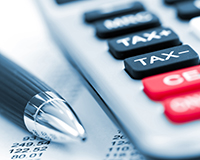Stamp duty income up by £1.2bn
Government coffers enjoyed a massive £1.2bn increase in the stamp duty tax take in 2016, according to the latest Treasury statistics.
Total government revenue from stamp duty rose by 11.3% year-on-year, to £11.4bn, while the residential tax take was £8.3bn, a 17.3% increase on the year before.
This is despite the effects of the referendum and changes to buy-to-let tax affecting demand and transactions throughout the year.
Government coffers enjoyed a massive £1.2bn increase in the stamp duty tax take in 2016, according to the latest Treasury statistics.
Total government revenue from stamp duty rose by 11.3% year-on-year, to £11.4bn, while the residential tax take was £8.3bn, a 17.3% increase on the year before.
This is despite the effects of the referendum and changes to buy-to-let tax affecting demand and transactions throughout the year.
Total residential transaction numbers increased by 7% over the course of the year, to 882,800, from 823,300 in 2015.
Both the sub-£500,000-price markets and over £500,000-plus price markets reported a rise in transactions numbers over the year, up by 6.8% and 10.7% respectively.
The findings show that despite the higher taxes on more expensive properties implemented at the end of 2014, and the additional 3% required on second homes implemented in April 2016, there has been no slowdown in the number of homes bought.
The number of “additional” home sales doubled between Q2 and Q4, from 30,400 to 62,800, as the market recovered from the introduction of the 3% duty.
Within 2016’s residential tax take, the additional 3% of stamp duty for second homes accounted for around £500m by Q4, 22% of the total quarterly residential tax take.
The additional 3% stamp duty raised £519m in Q4 2016, and just under £1bn in the second half of the year, £962m. That equated to 21% of the tax take in the final six months of 2016.
Lucian Cook, Savills head of residential research, said: “Stamp duty acted as a very significant source of revenue for the Treasury last year.
“The 3% surcharge on additional homes alone raised just shy of £1bn in the second half of the year, proving itself an effective way to swell the coffers, with much of the activity driven by cash rich investors who continue to see residential as a good investment vehicle.”
Read HM Revenue & Customs Quarterly Stamp Duty Statistics by clicking here.
• To send feedback, e-mail alex.peace@estatesgazette.com or tweet @egalexpeace or @estatesgazette











